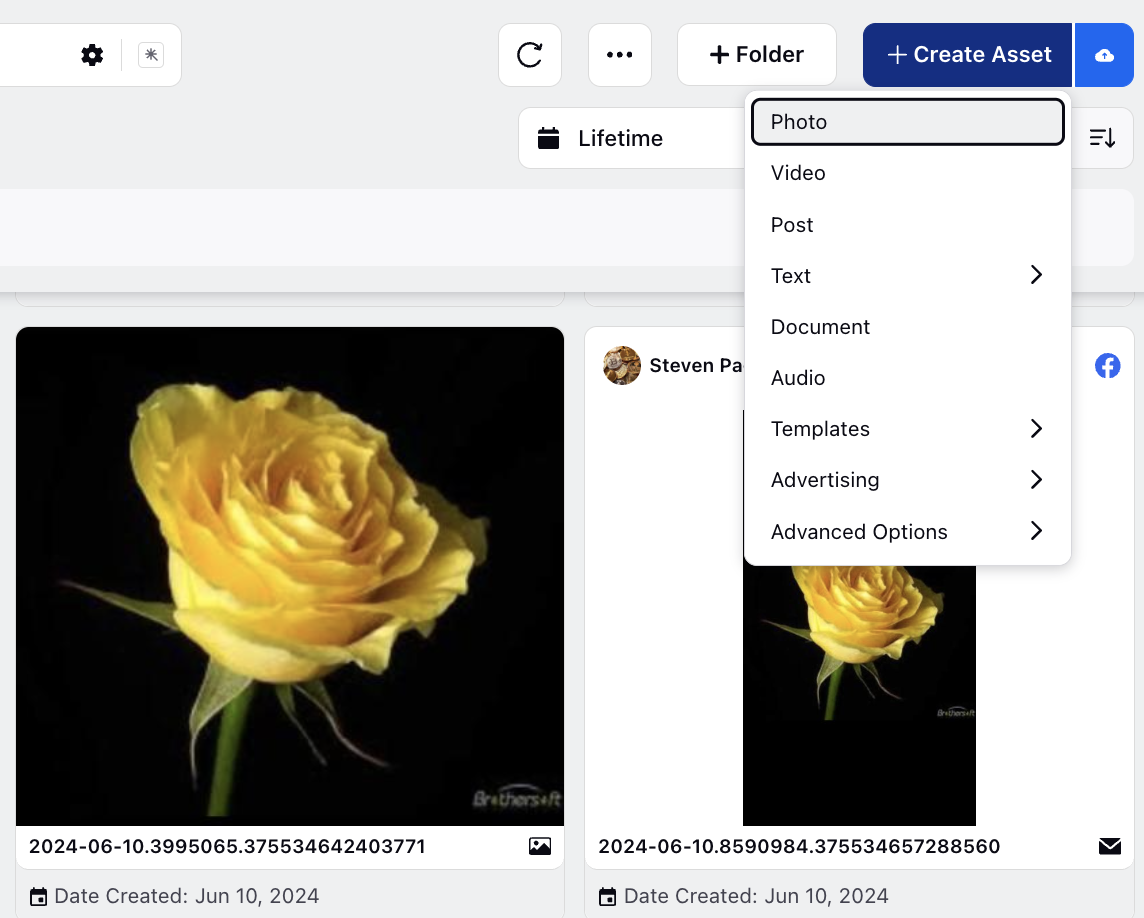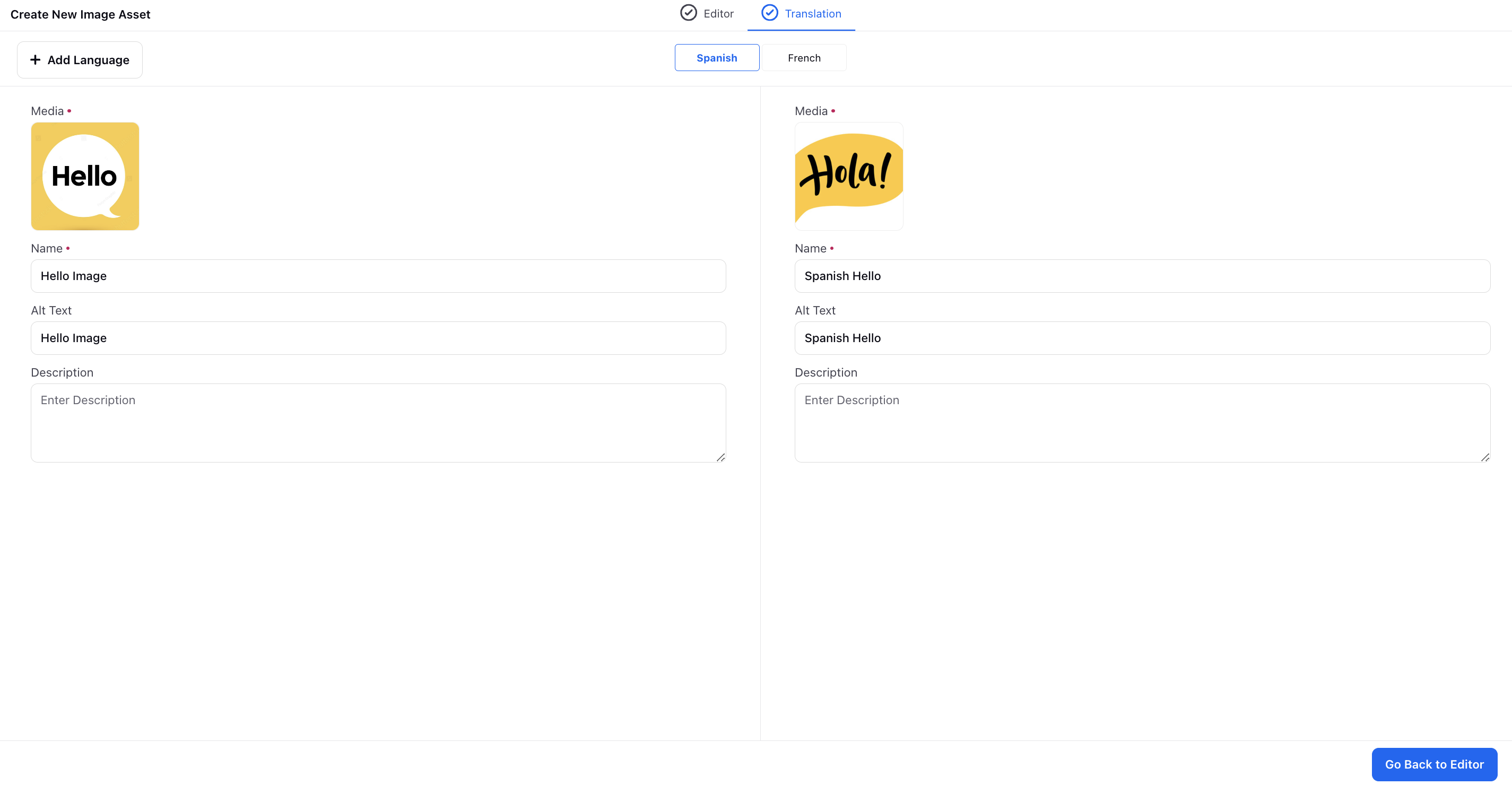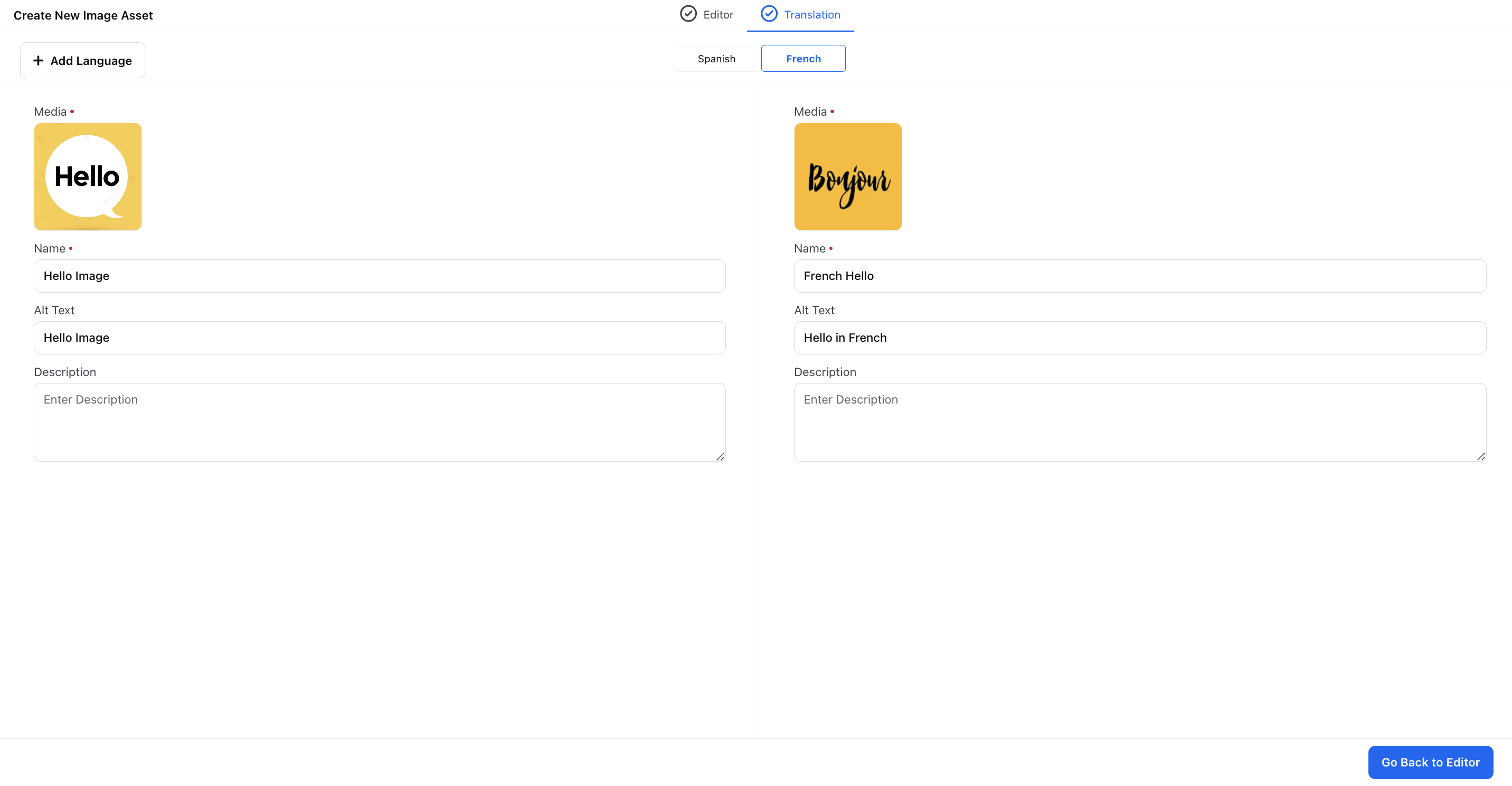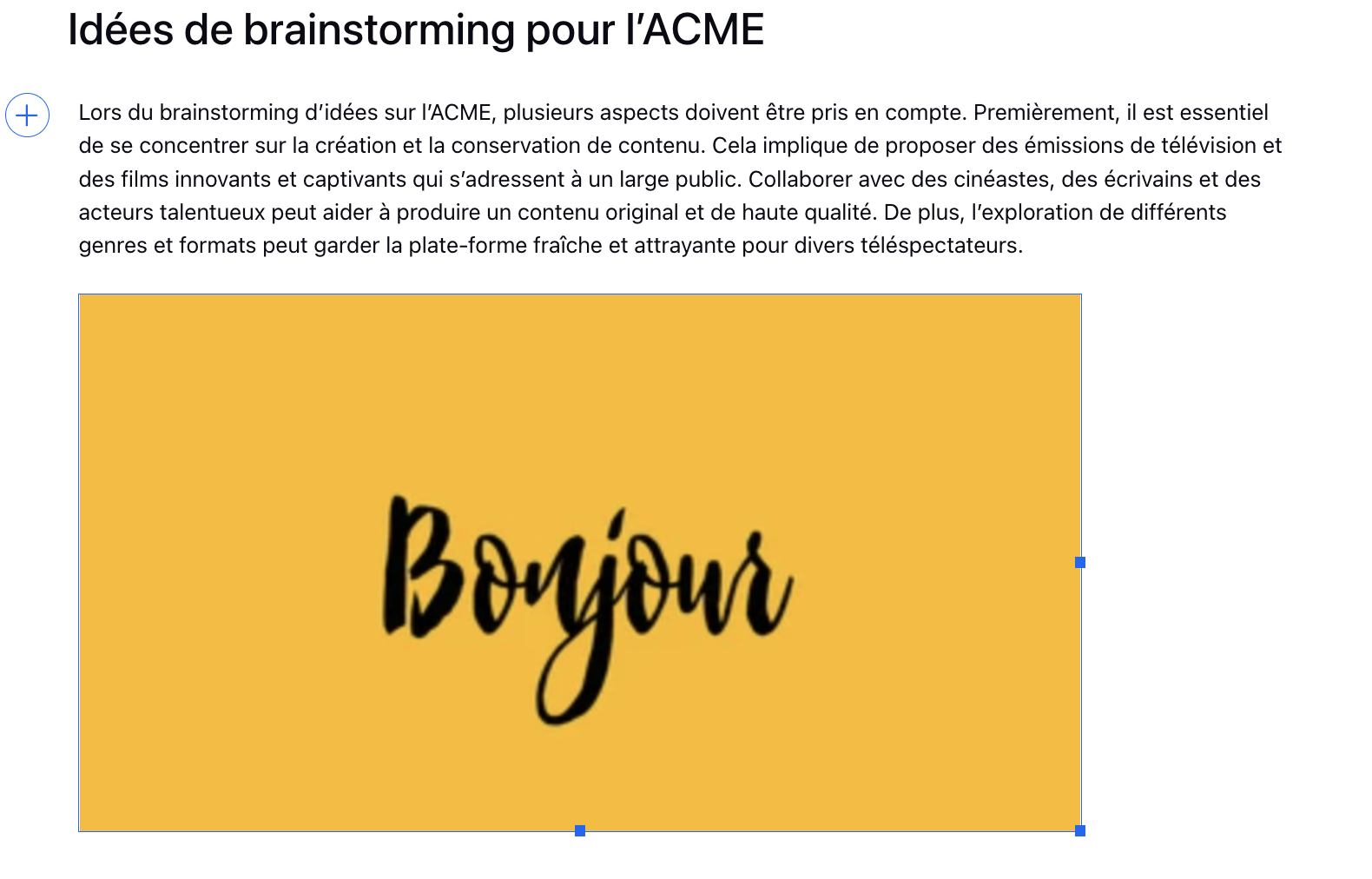Auto-localize Image Assets in Article Translations
Updated
You can automate the process of managing localized versions of images within articles in the Sprinklr Knowledge Base. By allowing authors to upload localized versions of images in DAM and automatically replacing translated images within articles, this feature aims to reduce manual effort and improve efficiency.
Enablement note: To learn more about getting this capability enabled in your environment, please work with your Success Manager. |
To Upload Localized Versions of Images in DAM
While creating a Photo asset in DAM, switch to the Translation tab and use the option on the top left to Add Languages.

After adding a language, include the localized Media version, and update the Name, Alt Text, and Description fields.

You can repeat this process to add more languages and corresponding images.

How Localized Images Are Integrated Within Articles
The first image created in the DAM is set as the default image asset. When this image asset is embedded in the base article, the default image will be used unless a translation exists.
When embedding an image within the base article, the system will automatically detect the base article's language and it's translations.
If the localized versions of the image exists for the detected languages, it will automatically replace the default image in the article.
If the localized versions of the image does not exist for the detected languages, the system will revert to using the default image asset.

Whenever an article is updated and re-translated, the system will automatically update the corresponding localized images within the translated versions of the article.
Adding a new translation of an image will not require republishing the article. The system will integrate the new translation seamlessly.
By following this workflow, you can ensure that image assets are correctly localized and dynamically updated within translated articles, maintaining a consistent and localized user experience.